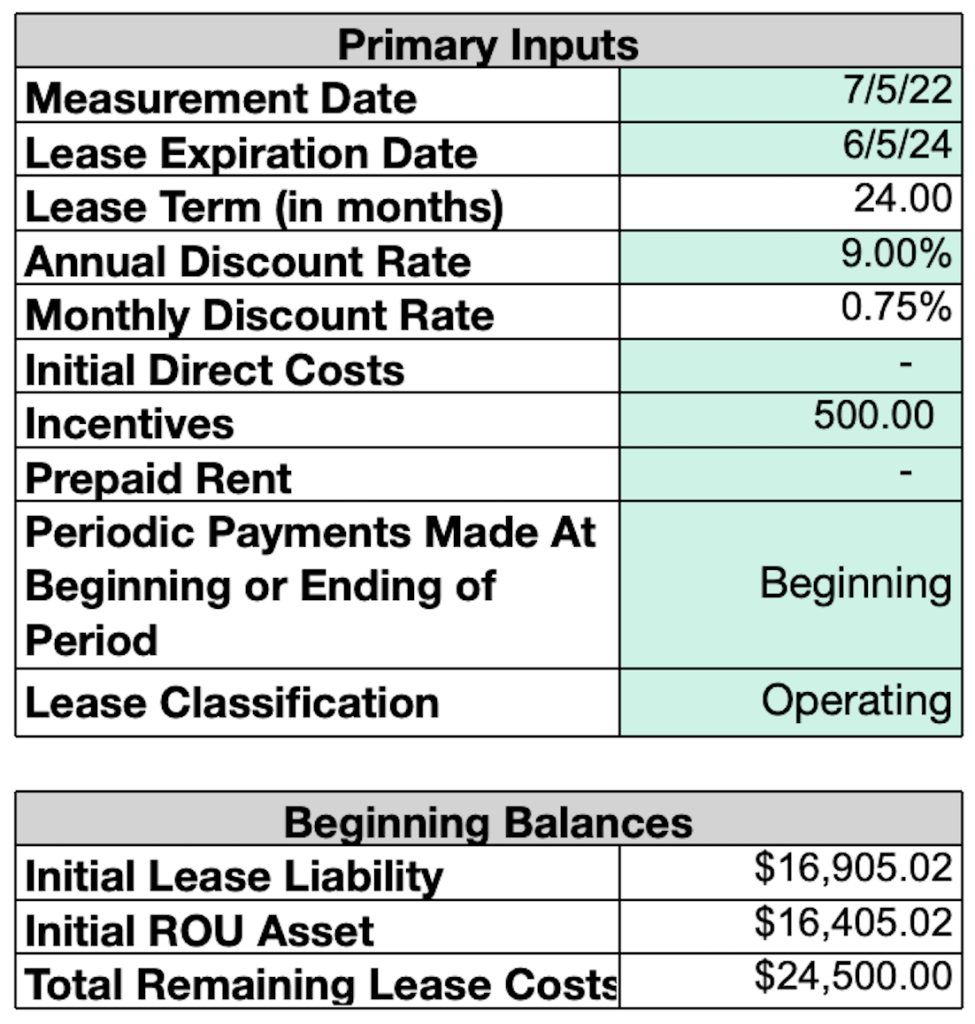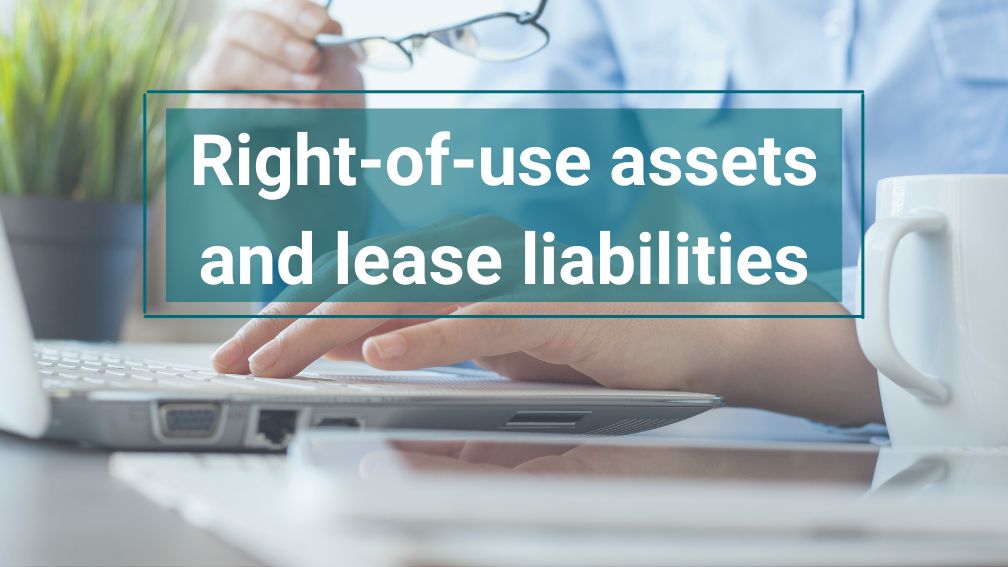Right-of-Use Assets and Lease Liabilities – Defined Under ASC 842
Last Updated on February 9, 2023 by Morgan Beard
ASC 842, the updated lease accounting standard from the Financial Accounting Standards Board (FASB), has finally come into force over the past few years. Public companies had to start complying in 2019 and private companies in 2020.
Foundational to ASC 842 lease accounting are lease liabilities and right-of-use assets, where:
- A lease liability is the total financial obligation of a lessee to a lessor (all payments still owed on the lease term).
- A right-of-use asset is a valuation of the period of access to a lessor’s asset by a lessee.
Together, lease liabilities and right-of-use assets represent a dual-model approach to the calculations on your balance sheet and income statement.
The development of ASC 842 began in the early 2000s, and its introduction represents a monumental shift in financial reporting for companies across the country. So, needless to say, transitioning from the old ASC 840 standard to the new leasing standard, ASC 842, is a huge lift to folks in the commercial real estate world.
As organizations make the transition, identifying contracts that have non-lease components and lease components will be important. Then deciding whether or not to separate those components will have an impact on your cash flow statement. In addition, the lease classification test will inform the type of lease you have.
In this post, we’ll explore the definition of right-of-use assets and lease liabilities under ASC 842 and how it relates to another key concept — journal entries.
What is lease liability?
A big change introduced with ASC 842 is the need for all leases, not just financial (aka capital leases) but also operating leases, to be recorded on a balance sheet.
The lease liability is the lessee’s financial obligation to make lease payments, discounted at the present value. This caveat is important: Making a payment of $1,000 in 10 years time is worth less than a payment of $1,000 today, as $1,000 in cash today can be used to make interest in the intervening period. That means lease payments further into the future are worth less in current value.
To calculate your lease liability, the lessee will need to know their lease payment, lease term, and discount rate (the rate at which future cash flows drop relative to current cash flow). Only then can the lease liability be discounted over the appropriate lease term at the determined discount rate.
Lease Payments
Within the lease agreement are defined lease payments. Base rent is the agreed-upon monthly rent payment. And variable rent or CPI (Consumer Price Index) is based on index rates. Both are examples of lease payments that would need to be accounted for in your lease liability under ASC 842.
Discount Rate
Lessees are required to use the rate implicit in the lease as their discount rate. If for some reason the rate implicit in the lease is unclear, then the lessee will have to make assumptions about the underlying asset’s fair value, the underlying asset’s residual value, and any initial direct costs deferred by the lessor. If the rate implicit in the lease is not available then lessees can use the incremental borrowing rate as the discount rate.
Lease Term
Under ASC 842 the lease term is defined as the non-cancellable period of the lease. Consideration like if the lessee is reasonably certain to extend the lease option, or exercise their termination options can impact the least term. The new standard stipulates the lease commencement date as the beginning of the lease term, regardless of the start date or move-in date.
Why is lease liability important?
Recording lease liabilities on your balance sheet is one of the pillars of accounting under ASC 842, as it prevents a wide range of off-balance sheet financing. This has been a great concern for regulators and investors, as it reduces the scope for a company to hide losses, tax liabilities, or debt from the state and shareholders.
Leveraging your lease payments, discount rate, and lease term will fuel your initial lease measurement and subsequent measurement processes.
What are right-of-use assets?
The “right-of-use” asset (or ROU asset) values the lessee’s right to occupy, use, or hold a leased asset. An ROU asset is an intangible asset that measures the valuation gained by the lessee through their ability to use an asset during a particular period of time.
Common ROU assets fall under PP&E, or property, plant, and equipment. Under ASC 842, the straight line recording is of the actual right-to-use of the asset as opposed to the actual asset.
In other words, the ROU assets represent the lessee’s rights to use a said underlying asset. Accounting treatments that need to be considered when calculating your right-of-use asset are as follows:
Initial direct costs
These costs are incurred by the lessee and are defined as incremental costs of a lease that would not have been incurred by the lessee if said lease had not been executed. An example of initial direct costs could be commissions paid to sell brokers and legal costs related to the lease agreement.
Lease incentives
Landlords often aim to sweeten a deal with lease incentives. Up-front payments made to the lessee for costs, like moving expenses or tenant improvement, make signing more attractive.
Lease prepayments
These are prepayments made by the lessee to the lessor. An example of this would be prepaid rent before the lease commencement date. The prepaid dollar amount can be used by the lessee to reduce rent expenses in the future.
Deferred rent
Under ASC 842, deferred rent is eliminated from the balance sheet. Instead, it is accounted for as a lease liability or a negative balance reflected in a company’s books.

Why are right-of-use assets important?
Just as ASC 842 requires that companies record all lease liabilities over 12 months, it also requires companies to record the ROU asset. An ROU asset represents the other half of lease liability under the double-entry approach to bookkeeping — the asset that is gained by a lessee in exchange for taking on the liability for a lease.
However, along with the liability for an asset, an ROU is also affected by liabilities that aren’t tied to ongoing payments for a lease. Namely, initial direct costs (such as legal fees to draw up a contract for a lease), payments made in advance of a lease, and any incentives offered by a lessor for accepting the lease (such as up-front cash).
A practical example of lease liabilities and ROU assets
Alice is the founder and CEO of a rapidly-growing start-up company. She is looking to rent office space for a remote team, and after scouring the market, she finds a perfect property owned by The Bluestone Group. The Bluestone Group proposes a triple net lease for two years, with $1,000 in rent due every month commencing on July 5, 2022.

Looking at the books, Alice ran through the math. While the total that will be paid on the lease will end up being the sum of 24 payments of $1,000 — $24,000 — the discount rate means the present value of a future payment is lower than its nominal value.
So, going off an incremental borrowing rate of 9% (also known as our discount rate), Alice calculates the lease liability at around $16,905. The Bluestone Group is very keen to get Alice and her start-up their new office lease. So they offer her $500 in cash so she can buy new office furniture. This means Alice’s right-of-use asset goes down by $500 to $16,405.
Building your journal entries
Lease liability and ROU assets are now essential figures in lease accounting in the wake of ASC 842. Gathering these data points can be a challenge for teams, and if you have a large lease portfolio then your journal entries become more complex. Whether your ASC 842 adoption date has come or passed, creating best practices for your in-house teams and auditors is a must.
For smaller lease portfolios, our lease amortization spreadsheet – excel template is a great place to get started. This free download will help you manage your lease liabilities and ROU asset calculations.
For larger lease portfolios, we recommend using software for your ASC 842 lease accounting compliance journey. Occupier’s lease accounting software helps corporate real estate teams address just this challenge and streamline the gathering of data around leases and their matching assets. Take a look now at how we can help you, or schedule a demo to see our software in practice.
